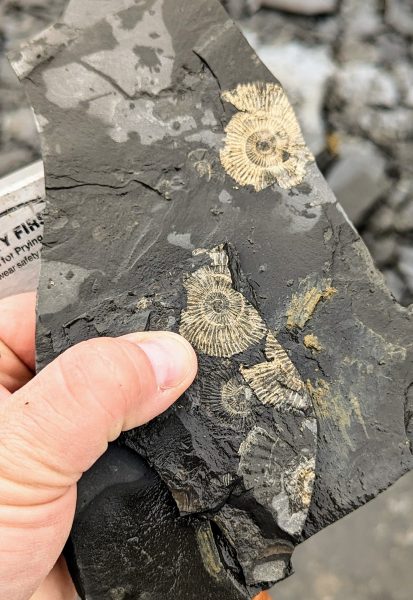Mineral Origins of Golden Fossils
December 12, 2023

All that glitters is not gold, or even fool’s gold in the case of fossils.
A recent study by scientists at the Jackson School of Geosciences and their collaborators found that many of the fossils from Germany’s Posidonia Shale do not — as previously thought — get their gleam from pyrite, commonly known as fool’s gold. Instead, the golden hue is from a mix of minerals that hints at the conditions in which the fossils formed.
The findings, published in Earth Science Reviews, provide insight into how these well-preserved specimens of sea life from the Early Jurassic formed in the first place, and the role of oxygen in their formation.
When the researchers used scanning electron microscopes to study the fossils’ chemical composition, they found that the fossils were mainly composed of phosphate minerals and very little pyrite. However, the surrounding black shale rock was dotted with microscopic clusters of pyrite crystals, called framboids.
The fact that the pyrite and phosphate are found in different places on the specimens suggests that although an anoxic (without oxygen) seafloor sets the stage for fossilization — keeping decay and scavengers at bay — it took a pulse of oxygen to drive the chemical reactions needed for fossilization.
“[Anoxia] helps with making the environment conducive to faster fossilization, which leads to the preservation, but it’s oxygenation that’s enhancing preservation,” said co-author Sinjini Sinha, a doctoral student at the Jackson School.
The research was funded by Cornell College and the National Science Foundation. The Posidonia fossil specimens used in this study are now part of the collections at the Jackson School’s Non-Vertebrate Paleontology Laboratory.
Back to the Newsletter